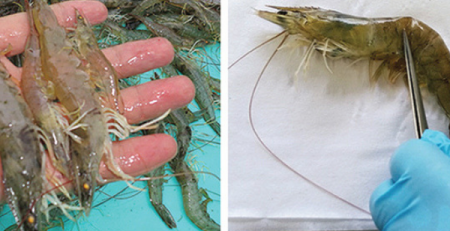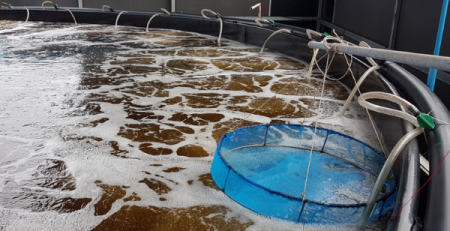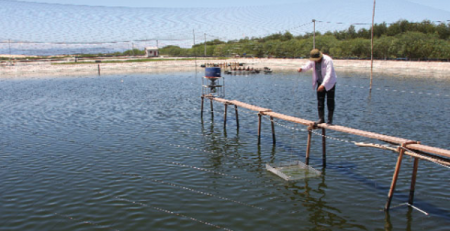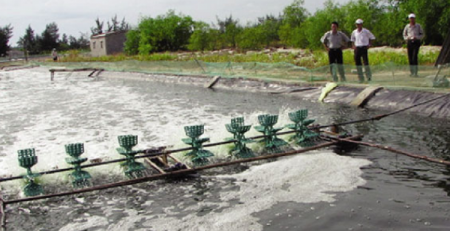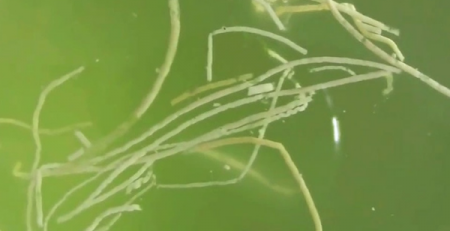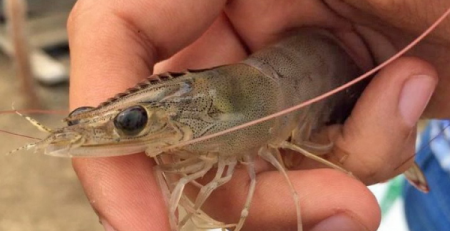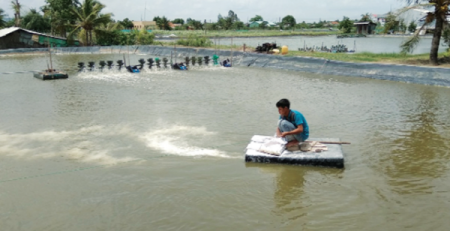The stocking density of white leg shrimps on ponds
Gamal M. Samadan et al., 2018 conducted experiments to evaluate the stocking density of shrimps suitable for sand shrimp culture in Purworejo, Central Java, Indonesia. This study aimed to determine the efficiency of white shrimp production with different stocking density.

The experiment was conducted using 9 ponds and with a stocking density of 100, 200 and 300 shrimp / m2 with three replications. Serve with 30% protein with 3% of daily biomass. Vitamin C and omega protein are used in addition to the shrimp diet. Frequency of feeding is 4 times per day at 07.00, 11.00, 15.00 and 20.00. First food mixed with vitamin C (10 g food: 0.1 g vitamin C) in the morning and omega protein (10 g food: 0.1 g protein omega) in the afternoon. The feed is given by spreading on the pond surface, especially at the edge of the pond. Water exchange is carried out periodically with 10% of the volume of each pond to maintain the quality of pond water. The water exchange process was carried out along with the sewage siphon process at the bottom of the pond. Both of these processes were carried out after 25 days of shrimp culture first and then continued once a week until harvest.
Parameters such as temperature, transparency, pH, DO and salinity were measured daily, while the biological parameters nitrate, nitrite, ammonia and shrimp were observed, monitored every 2 weeks.
Result
Results showed that the salinity, pH, nitrite and nitrate parameters were not significantly different in the three treatments. However, dissolved oxygen (DO) and ammonia (DAM) in the shrimp farming group was significantly lower than those of the stocking density of 200 and 300 shrimp / m2 and the TOD parameters were also different significant between treatments 100 and 200 (p <0.05). Nitrate, nitrite and ammonia levels increase over time, especially in higher densities, due to higher feed intake for shrimps.
Results showed that the survival rate was significantly different between the three treatments (p <0.05). The value of feed conversion ratio (FCR) during the culture period also varied between the three treatments. FCR increases as shrimp density increases. The smallest FCR value at the density of 100 fish / m 2 was 1.00 and the largest was 300 with FCR of 2.0.
From a economic point of view, low stocking density produces a relatively large size, and has a higher selling price than small shrimps. In addition, optimum stocking density can reduce the cost of farming activities, especially food and the cost of aeration. Therefore, shrimp culture in sand can be applied at stocking density of 100 or 200 individuals / m2 when considered in terms of growth rate, survival rate and FCR. However, to raise white shrimp in sand ponds it is recommended to pay attention to water quality management, especially ammonia, regular waste siphon and environmentally friendly waste management.
Cre: contom.vn


